Fruit trees are always a welcome addition to backyards and gardens because they become an instant source of healthy food while creating an old-fashioned, traditional look. We have researched facts on how to successfully grow fruit trees. It includes all the factors and elements you need to consider.
It is possible to grow a single tree to get fruit, but if you want better production, two or more trees will increase the yield. Trees bear more fruit when cultivated as a grove since pollination plays an important part in their natural cycle.
The number of trees you need to plant would depend mainly on the fruit variety, their pollination properties, the presence of vectors, and the environment. Read on and find out how to optimize yield, care, and maintain your tree and other factors that affect fruit development.
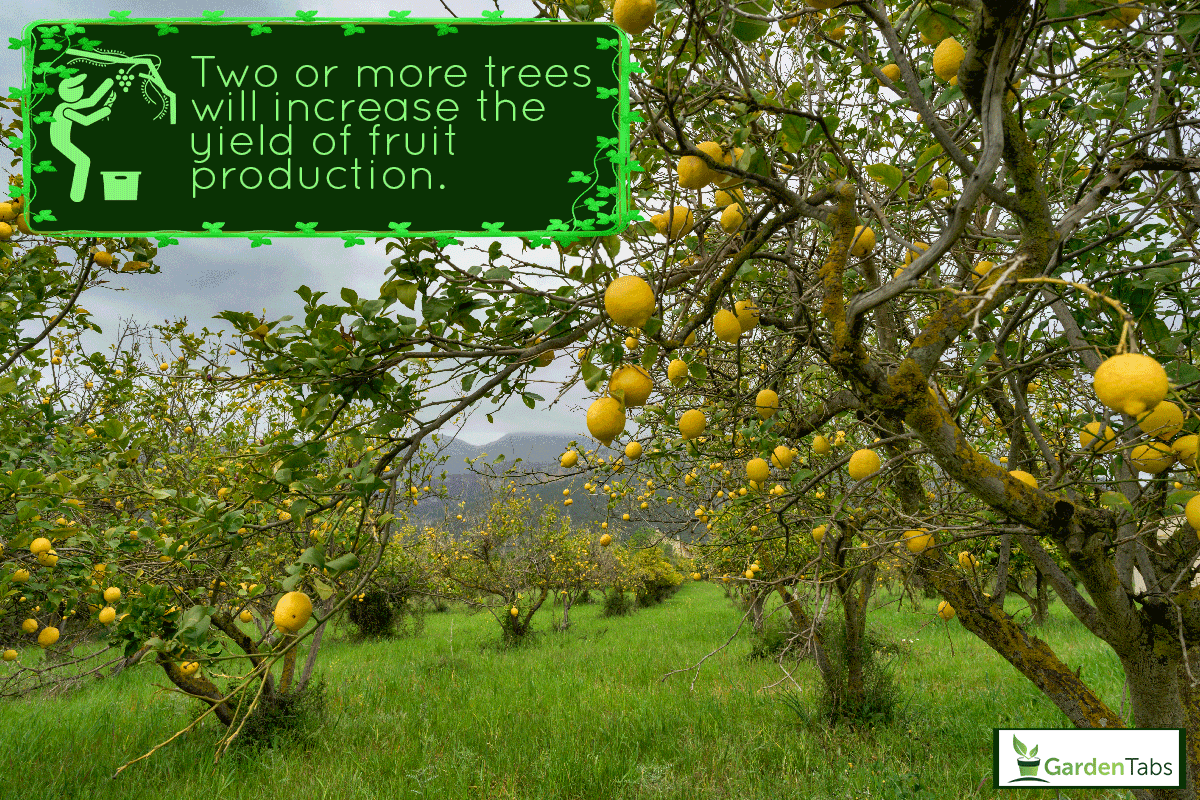
Pollination: The First Step in Bearing Fruit
Pollination is the main determinant in growing fruit productive trees that are productive.
Pollen grains are dust-like particles formed in the male structures (anther) of seed-bearing plants and, when transported to the female counterparts (stigma), result in fertilization which later produces fruit.
The transfer of pollen is facilitated by birds, insects, small mammals, water, and the wind, collectively referred to as pollinators or vectors. Interestingly, pollination is an unintended, incidental result of an animal's activity on plants.
When bees or butterflies feed on the nectar of flowers, pollen grains get attached to the fine hairs of their legs and bodies, and when the creatures transfer to another plant, can fall off and result in fertilization.
Not all plants rely on vectors in order to reproduce. Self-pollinating species such as peaches, tomatoes, grains, and apricots are examples of varieties where the stamen sheds pollen directly onto its own stigma.
Most fruit-bearing trees like apples, plums, and pears, to name a few, need pollinators to receive pollen from a different plant of the same species in order to be fertilized.
As mentioned, it is not necessary to plant more than one fruit tree as long as there is another variety of the same tree at least 100 feet away to enable cross-pollination.
However, if you have enough space, planting two or more trees increases the likelihood of pollination and subsequent production of fruit.
Tree Guild: Add Companion Plants for Healthy Fruit Trees
Surrounding your fruit tree or central element with other plants that supplement its development by providing nourishment would create a tree guild.
The right kind of companion or underplants release organic matter and minerals, provide a natural layer of mulch, attract beneficial insects, repel pests and prevent excessive weed growth.
The tree would benefit from the ecosystem since the soil is enriched and regulated, and the occurrence of pollination is higher, which would translate to increased fruit yield.
To best illustrate, the following example features the companion plants that would greatly complement an apple tree.
- Underplants are classified based on their effects and the benefits they contribute to the tree guild.
- Accumulators are plants that have deep roots that accumulate and deposit minerals to the surface. They include artichoke, comfrey, and dandelions.
- Attractors encourage the presence of beneficial insects, which would increase pollination and fruit yield. Bee balm, coriander, and fennel are examples.
- Fixers absorb nitrogen from the air and convert them to absorbable compounds in the soil suitable for uptake. Yarrow, comfrey, and white clover are fixers.
- Natural mulchers which retain moisture and regulate soil temperature include artichoke, clover, and rhubarb.
- Weed suppressors like mint, leek, and clover provide cover and shade out the soil and prevent unwanted growth.
- Repellers such as garlic, marigold, and chives emit strong scents that drive off pests and other creatures not beneficial to the ecosystem.
Easiest Fruit Trees To Grow
When choosing which fruit tree to grow, there are several factors to consider, the type and variety, soil conditions, space and location, temperature and general climate, and of course, the fruit you enjoy most.
The following are regarded and recommended by experts as the easiest trees to grow:
Apple Tree
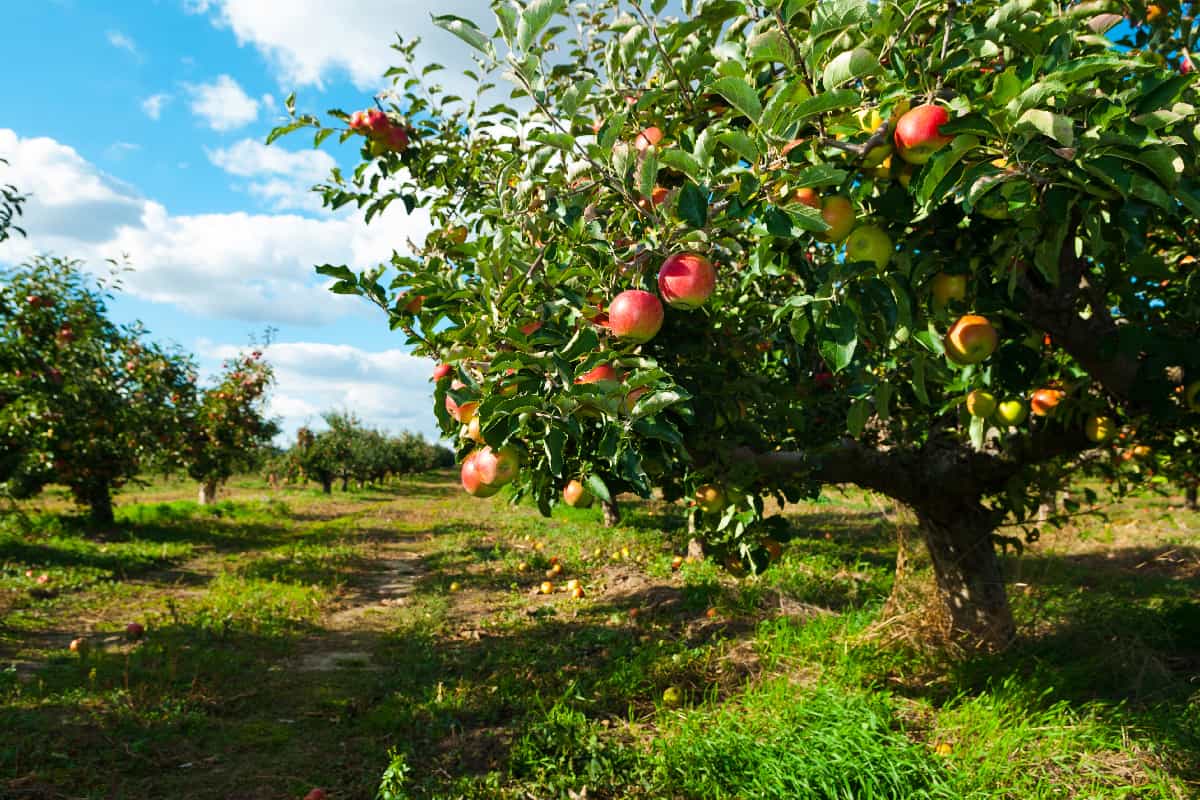
Apple trees are an excellent option for beginners to grow. If you want to develop a single tree due to space constraints, there are self-fertile varieties of apples that are available. Ideally, however, it is best to plant a second or partner tree for cross-pollination and greater fruit production.
As with most trees, apples thrive best in full sunlight and need several hours of exposure per day. Regular watering and light fertilizing are needed during the early stages of development. Once established, apples are low maintenance and require less watering, yearly pruning, and fertilizer application. Depending on the variety, fruits appear between two to four years.
Pear Tree

Pears are also relatively easy to grow and maintain, but most varieties do not self-pollinate and require a partner tree.
Pear trees grow well in rich, moist soil and need to be watered often during summer. Regular pruning and feeding will maximize fruit yield as long as they get enough sunlight. It can take pears five to seven years before the tree bears fruits.
Cherry Tree
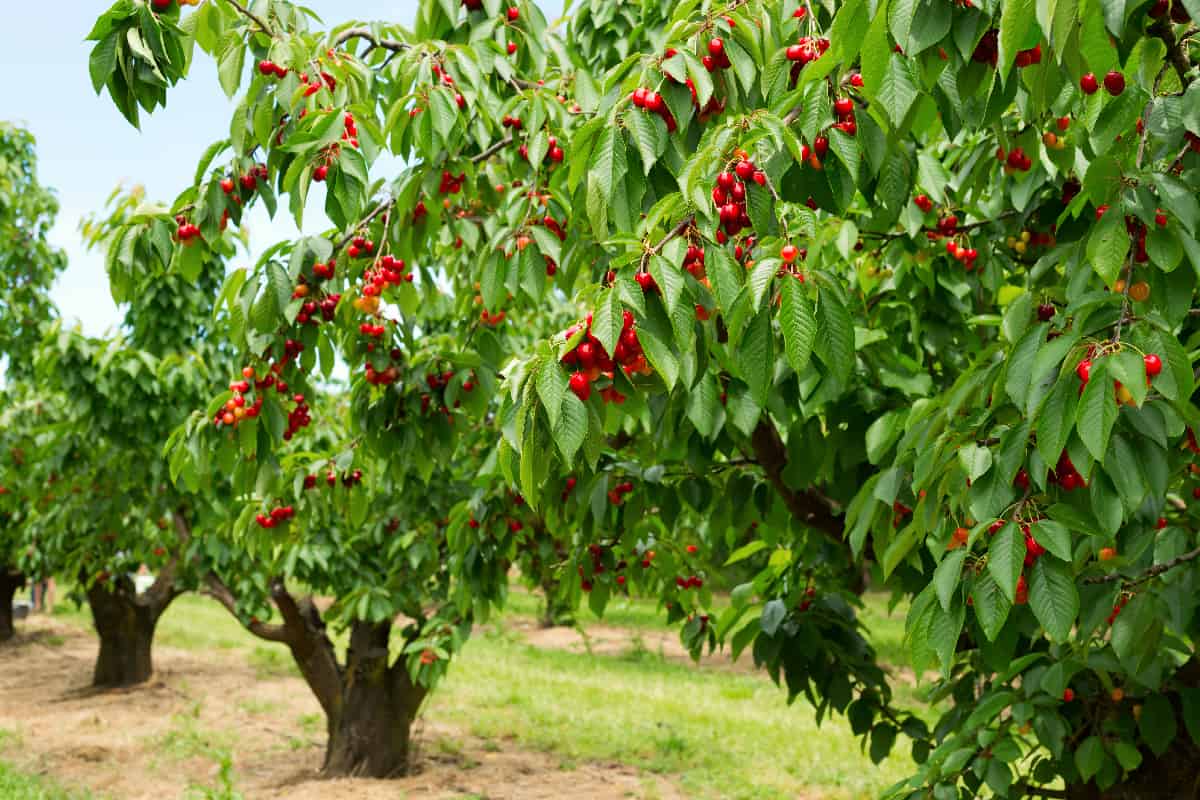
Apart from the delicious fruit, cherry trees feature beautiful blossoms that enhance the appeal of any yard or garden. Particular varieties are self-pollinating and can be grown by themselves.
They need fertile, well-draining soil and regular watering until they become established, after which they become low maintenance. Sweet cherries need full sunlight to thrive but sour, cooking varieties can be planted in areas with partial shade.
Peach Tree
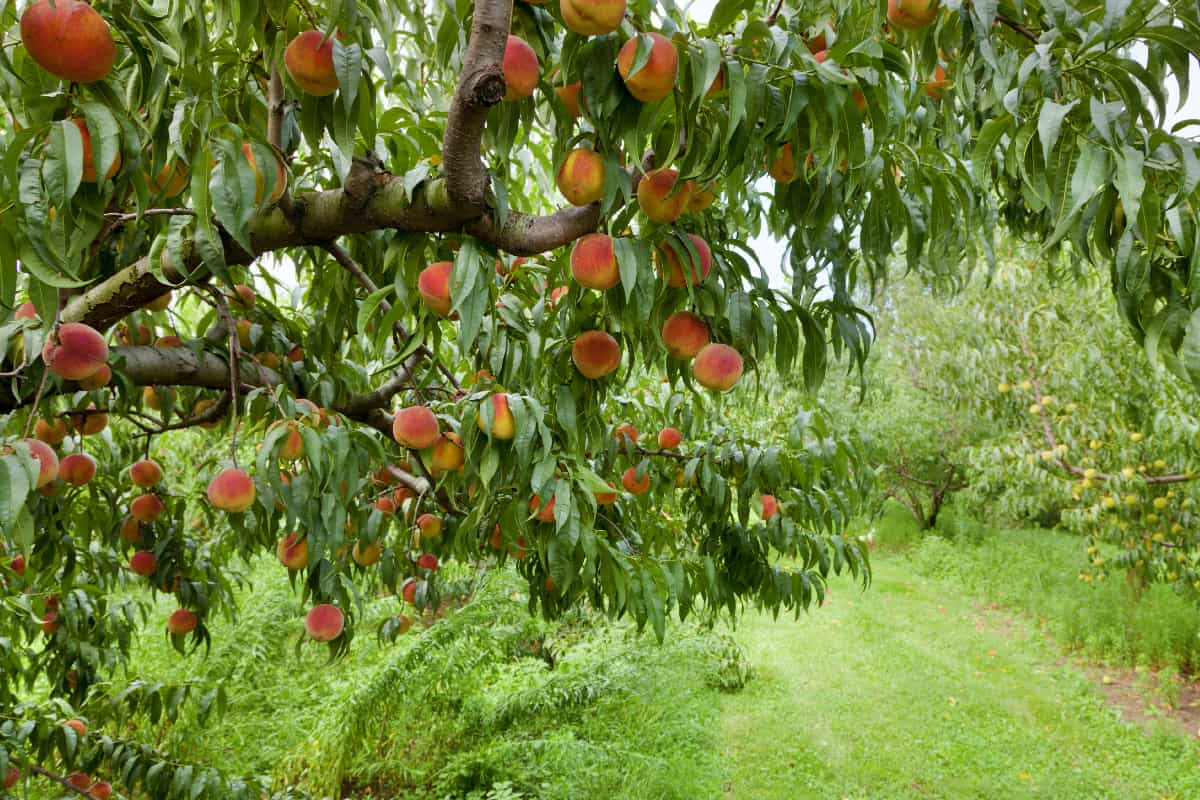
Peaches require the least care and maintenance compared to other trees, and they are quick to crop, usually producing fruit after a year.
Peaches tolerate most soil types as long as they drain well, get adequate sunlight, and are watered regularly during the growing season. Peaches are prolific in producing fruit and are self-fertile, so they can be grown individually.
Lemon Tree
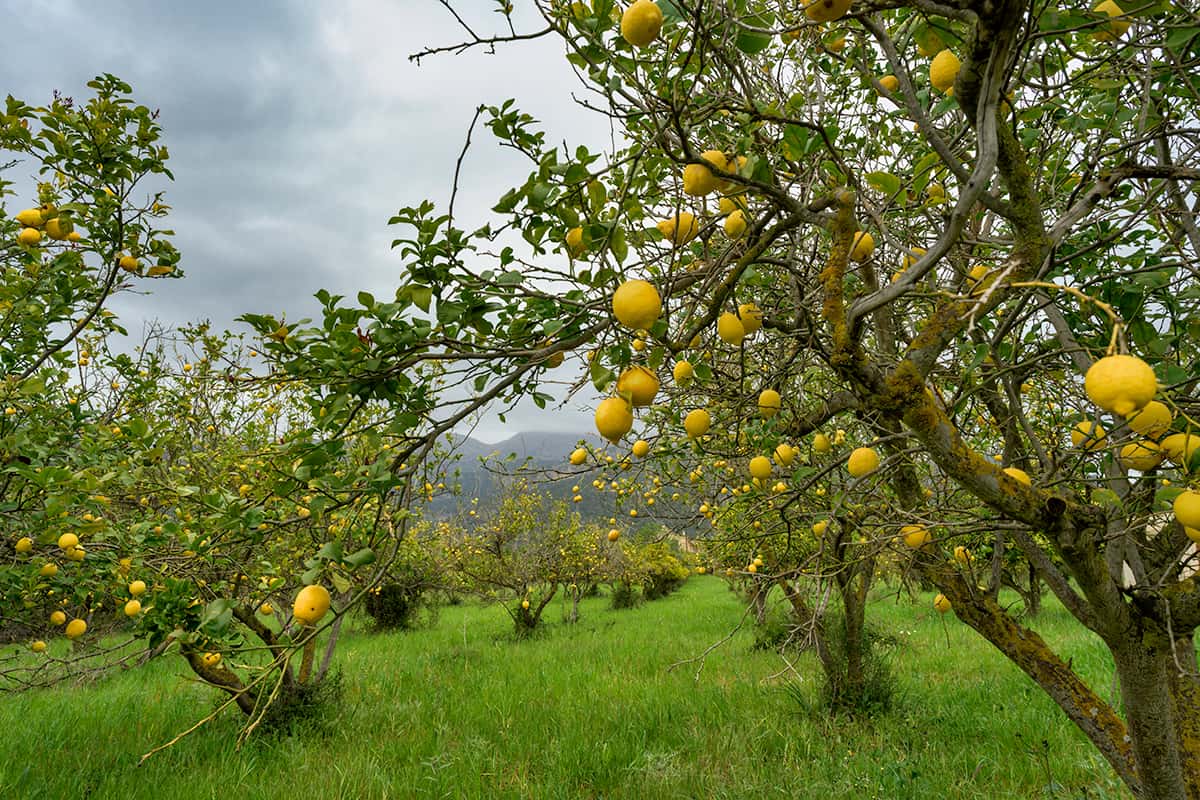
Lemon trees are best grown in pots, especially if you live in regions with colder climates. They are small flowering trees that produce edible fruits and emit a fragrant fruity scent that emanates through the entire yard.
Apart from this, the plant can pollinate on its own, so it would not be necessary to grow another tree to stimulate fruit production.
They are relatively easy to care for since the tree can tolerate a wide range of well-draining soils, provided that the environment is neutral to slightly acidic.
Watering requirements vary depending on the tree's maturity. Newly planted varieties require hydration every other day for weeks, while established trees thrive best when watered occasionally, particularly during blooming and fruiting seasons or amidst long dry spells.
What Is The General Care And Maintenance Of Fruit Trees?
Most fruit-bearing trees require the most care during the growing stage and need less maintenance once established.
Light
Trees need to be grown outdoors due to their sunlight requirement. Most varieties need 6 to 8 hours of exposure a day to develop well and eventually yield fruits. The location and space between trees must provide enough room for full growth while allowing adequate sunlight to penetrate.
Water
You should water the tree regularly and thoroughly during the growing season. Since the young plant has developing roots sensitive to too much moisture, the soil should relatively be loose and drain properly.
Avoid planting in areas where water tends to pool after rain.
Soil
Fruit trees prefer to be grown in well-draining and sandy or loamy environments with a soil pH between 6.0 to 6.5. If you intend to plant them in a pot, you can do so by creating your own potting mix. Equal proportions of sand, peat moss, compost, and perlite facilitate excellent drainage that can still retain adequate moisture.
Fertilizer
Fertilizers with high nitrogen content are the only mineral that can be applied to your fruit trees - do so once a year. This macronutrient is crucial in their growth because it helps stimulate leaf development. Leaves are vital aspects of the process of photosynthesis.
To promote blooming and fruit formation, apply fertilizers with adequate phosphorus or phosphate content.
Pesticides
Fruit trees tend to develop many fruit diseases caused by pests and fungi. Captan is the best remedy for various diseases, while sulfur is particularly effective at managing powdery mildew, scab, and rust.
Pesticides must be diluted so as to not affect pollinators including bees and butterflies. Do not apply pesticides during the flowering or fruiting season because they can significantly affect fruit production or yields. After harvesting is the best time to spray chemical compounds.
Check out Trifecta Natural Pesticide on Amazon.
In Closing
It is possible to grow a single fruit tree and still produce yield if it is self-fertile, while cross-pollinating varieties need a companion tree or a nearby source of pollen. Consider the benefits of underplants to complement the development of your fruit tree and to maximize its production. We hope the article provided enough material to help you eventually enjoy the fruits of your labor!

